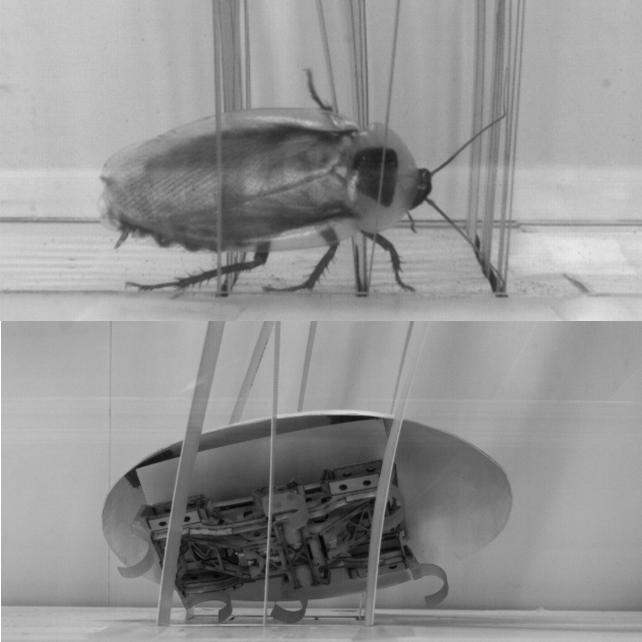Watch A Robotic Roach Learn To Tuck And Roll
By mimicking the real roach's ability to slip through cracks, robotic roaches could help save trapped disaster victims

Cockroaches are amazingly skilled at slipping through the cracks of walls, rubble, and ruins. While this makes them annoying household pests, it also means their bodies are useful for searching through rubble to find disaster survivors. In the past, scientists have strapped electronic controls to the backs of real-live cockroaches, creating controllable cyborgs for future rescue work. Now, researchers at the University of California, Berkeley have made a new robot that can slip through cracks just like a real roach, but without the ick factor.
Published today in Bioinspiration and Biomimetics, a study examines how a roach can navigate the little gaps that are otherwise impermeable. Roaches turn over onto their sides, sliding the thin parts of their body into the narrow space between blades of grass or a crack in the floorboards. The scientists wanted to find out how important the roach’s body shape is to squeezing through such tight spaces. When they added flat oval or flat rectangle segments to the roaches’ backs, they were unable to push and roll, their bodies no longer moving effortlessly. They tried doing the same thing with a VelociRoach robot, and just like the real-life roaches, the robots had a hard time getting through cracks. Only with a rounded shell, like the roach’s natural ellipsoid discoid shape, could the robo-roaches accomplish the push-and-roll maneuvers of a cockroach. See it in action below:
